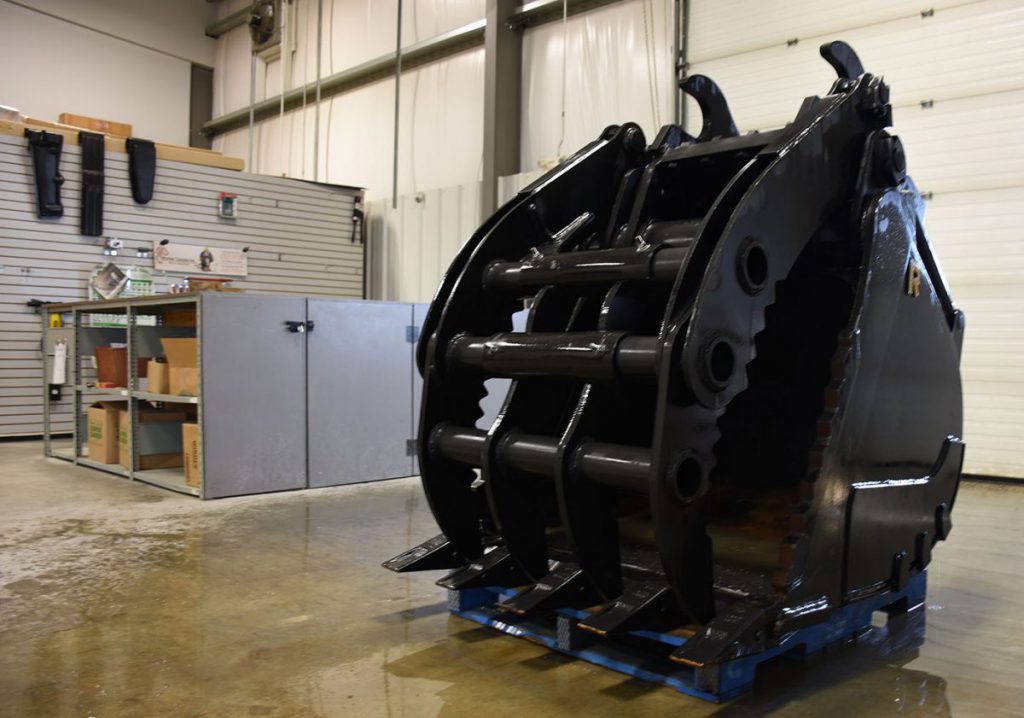Look for time saving efficiencies by using the right bucket.
Tip No. 1: Choose a bucket type with soil conditions in mind
There are two primary bucket types for contractors to choose from – heavy-duty buckets and severe-duty buckets.
Heavy-duty buckets are the most common excavator bucket type because they work well in a variety of soil conditions, such as clay, gravel, sand, silt, and shale. The buckets are manufactured with high-quality, abrasion-resistant material, durable side cutters for extra strength and protection and bottom wear pads.
Severe-duty buckets are best suited for excavator operators who are handling abrasive materials in heavy or severe digging and truck-loading applications. The buckets are manufactured with abrasion-resistant material for added protection and strength when digging in loose rock or pit and quarry operations. The buckets’ side cutters, shell bottoms, side wear plates and weld-on wear shrouds all consist of abrasion-resistant material. In addition, reinforced gussets help strengthen the machine-fitting joints on the buckets to promote uptime.
Tip No. 2: Select a bucket style to suit your digging needs
There are three primary bucket types for use with excavators, trenching, ditching and angle tilt buckets.
Trenching buckets can easily dig narrow, deep trenches while maintaining excellent breakout force and contributing to fast cycle times for the excavator. The buckets are built with abrasion-resistant material for reduced weight and offer high-strength side wear plates and bottom wear straps for added durability.
Ditching buckets have a similar profile to standard digging buckets, but have a wider, deeper profile for smooth operation in sand and clay. In addition, the buckets provide optimal versatility when loading material, grading, backfilling, cleaning ditches for improved drainage and working on slopes.
Standard features of ditching buckets include a lift eye for lifting applications, weld-on side cutters and a reversible bolt-on cutting edge that leaves the work area smooth when the job is completed.
Angle tilt buckets are versatile and cost-effective when used in finishing, grading, and land-clearing applications. The buckets can be rotated 45 degrees either direction of center and are equipped with an adjustable tilting speed with auxiliary flow control valves. Angle tilt buckets allow your operator to complete the job without having to move the excavator as much – adding to the speed and efficiency of the operator.
Tip No. 3: Add quick couplers for faster tool switch ups
Another key to getting the most productivity from an excavator is the investment in a quality attachment change system. Investing in a quick attachment connection system will expand your attachment versatility and produce faster attachment switches. Depending on the ground conditions and density of the material, a utility contractor may need a ditching bucket at one location, a trenching bucket at another or an angle tilt bucket at the next. Quick couplers make it that much easier and faster to change buckets and other attachments while on the job site.
Operators are also more likely to use the right size bucket if they can quickly switch between buckets to best match the trench width.
Tip No. 4: Inspect wear items and replace parts
Maintaining excavator buckets is just as important as following regular maintenance schedules on the excavator itself and should not be overlooked. Smith recommends daily inspection of the bucket teeth, cutting edges and heel of the bucket for obvious wear or breakage. Bucket teeth should be replaced before they wear down and the bucket adapter is exposed.
There are many wear points on a bucket and are crucial to replace when worn to help prolong the life of the bucket. If the bucket shell is worn beyond repair that is a costly replacement when compared to ongoing maintenance. Accudraulics sells hard-facing kits and blade kits for almost all buckets.

